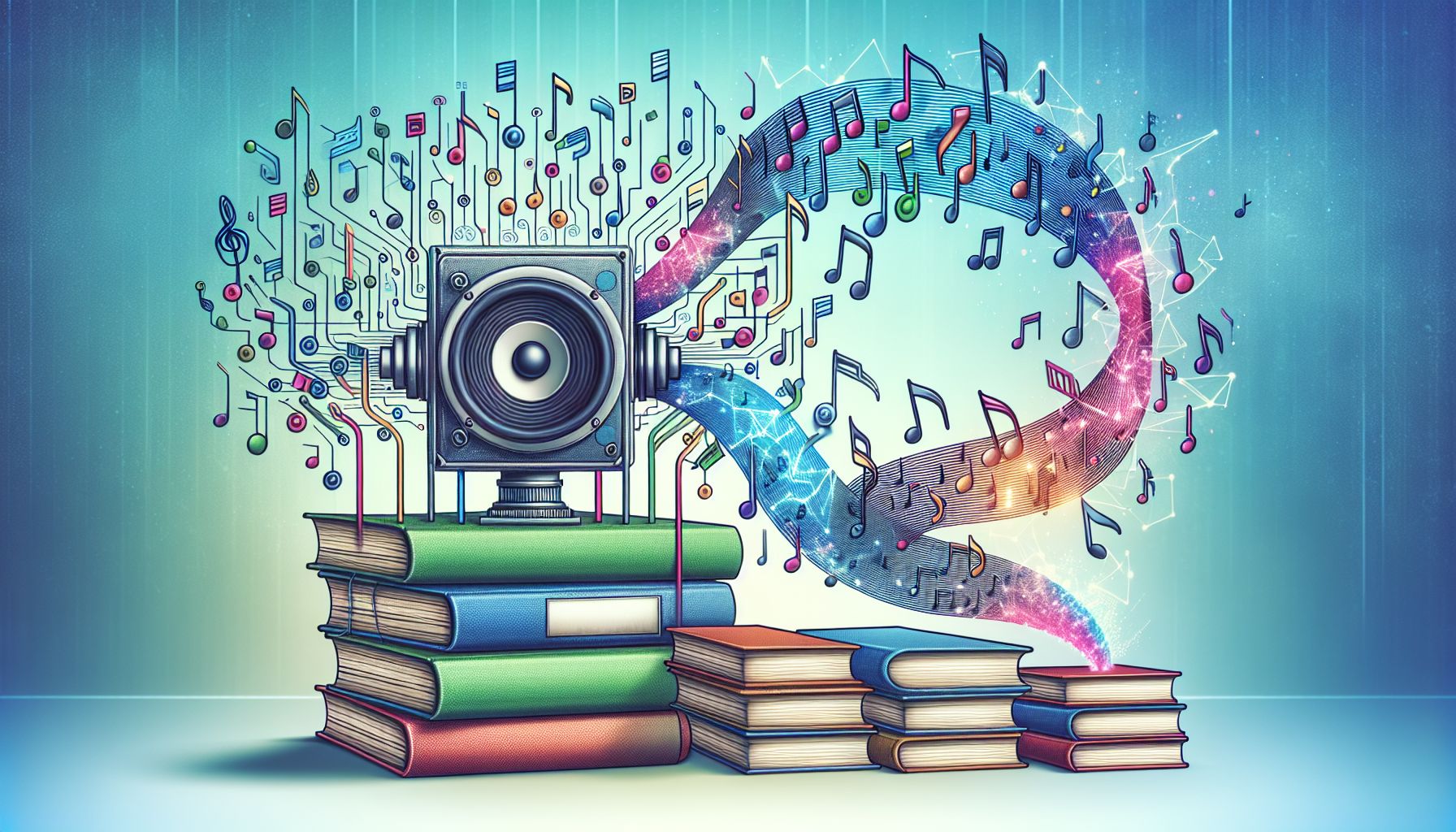📌 Let’s explore the topic in depth and see what insights we can uncover.
⚡ “Can you imagine your written words transforming into an enchanting audio tune? Dive into the cutting-edge world of text-to-audio generation models and make your words sing!”
In the boundless ocean of technological advancements, the text-to-audio technology has emerged as a game-changer. These innovative tools can transform your digital text into engaging audio content, opening up new avenues for learning, entertainment and accessibility. Today, we’ll be exploring two such titans of this tech field: Bark and MusicLM. In this blog post, we’ll unravel the layers of these advanced models, providing insights into how they work and the potential they hold for revolutionizing our audio-visual experiences. Whether you’re a tech enthusiast, an AI curious, or simply someone looking for a way to convert your favorite ebook into an audiobook, this deep dive into Bark and MusicLM is sure to pique your interests.
🎙️ The Art and Science of Text-to-Audio Generation

"Unleashing the Symphony of Text-to-Audio Models"
Text-to-audio technology, at its core, is about transforming written language into spoken words. It’s like having a personal narrator who can turn any text into an audio story. But how does this technology work? Let’s break it down into simple, easy-to-understand chunks.
**Text Parsing
** 🔍 Interestingly, where the process starts. The text is read and analyzed for meaning and context. This understanding helps the system to accurately pronounce words, understand punctuation, and convey the right emotions.
**Phonetic Transcription
** The parsed text is then turned into phonetic symbols, which serve as instructions for how each word should be pronounced.
**Speech Synthesis
** The phonetic symbols are then used to generate the speech. 🔍 Interestingly, where the magic happens, as the lifeless text is suddenly imbued with voice, tone, and emotion. The sophistication and quality of text-to-audio generation models have come a long way, and Bark and MusicLM are perfect examples of these advancements.
🐶 Bark: A New Breed of Text-to-Audio Generation
Bark, like its name suggests, is all about making speech synthesis more natural, expressive and human-like. It’s not just about reading the text; it’s about telling a story, expressing emotions, and making the listening experience as engaging as possible. Let’s dig a little deeper into what makes Bark so special.
**Expressive Speech Synthesis
** Unlike traditional text-to-audio models, Bark doesn’t just convert text into speech. It imbues it with life and emotion. It can modulate the tone, pitch, and speed of the speech to convey the right emotions, making the audio content more engaging.
**Multilingual Support
** Bark can bark in more than one language. It supports multiple languages, making it a versatile tool for users across the globe.
**Customizability
** The model allows you to tweak and customize the voice output to suit your preferences. You can adjust the speed, tone, and pitch of the voice, creating a personalized listening experience.
🎼 MusicLM: Text-to-Audio with a Melodious Twist
MusicLM takes a slightly different approach to text-to-audio generation. It combines the power of natural language processing with music theory to generate musical compositions from text. It’s like having a personal composer who can turn your words into a melodious symphony. Here’s why MusicLM hits all the right notes:
**Music Generation
** MusicLM can generate unique musical compositions based on the input text. It analyses the text for emotion and sentiment and creates music that resonates with it.
**Melody and Harmony
** The model doesn’t just churn out random notes. It understands the intricacies of music theory, creating melodies and harmonies that are pleasing to the ear.
**Emotional Resonance
** By analyzing the sentiment of the text, MusicLM can create music that emotionally resonates with the listener. It can turn a melancholic poem into a sad symphony or an exciting story into an upbeat tune.
🚀 Potential Applications of Text-to-Audio Generation Models
The potential applications of text-to-audio models like Bark and MusicLM are as diverse as they are exciting. Here are just a handful of ways these models could be used:
**Accessibility
** For people with visual impairments or reading disabilities, these models can make digital content more accessible.
**Education
** They can be used to create engaging audio lessons for online learning platforms, making education more fun and interactive.
**Entertainment
** They can turn novels into audiobooks, blog posts into podcasts, or even generate unique music for films and games.
**Marketing
** Businesses can use these models to create engaging audio content for their marketing campaigns, making their brand more memorable.
🧭 Conclusion
In our digital age, where content is king, text-to-audio generation models like Bark and MusicLM are pioneering new ways to consume and interact with content. They’re not just transforming text into audio; they’re transforming the way we learn, engage, and express ourselves. Whether you’re an AI enthusiast, a content creator, or simply a lover of good stories and music, these models hold exciting potential for the future. So let’s embrace the audio revolution and let these models narrate our digital stories and compose our textual symphonies. After all, in the world of AI, it’s not just about reading between the lines; it’s about hearing the music in the words.
📡 The future is unfolding — don’t miss what’s next!
🔗 Related Articles
- Real-World Supervised Learning Project, Choose a dataset (e.g., Titanic, spam detection, diabetes prediction),End-to-end pipeline: preprocessing, training, tuning, and evaluation,Model selection and deployment insights
- Gaussian Mixture Models and Expectation-Maximization
- Combining Clustering with Deep Learning Models (Deep Embedded Clustering)
